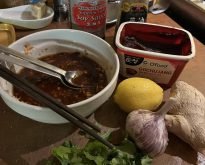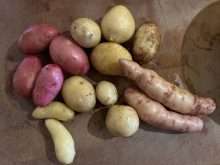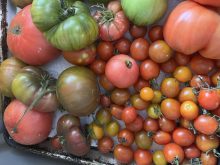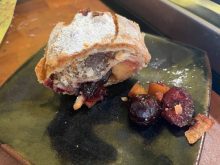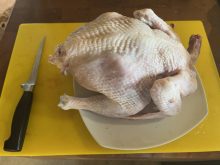“What do you think of when you hear the word schmaltz?” I ask my husband Dave.
He hesitates for half a heartbeat. “Soppy, sentimental writing or music,” he says. Dave’s a retired journalist, a card-carrying lover of edgy jazz and R&B, fan of hardbitten detective and police procedural TV shows and writer of lean short stories, poems and novels. But then he equivocates. “Schmaltz also means chicken fat, right?”
Dave’s Jewish family and my Germanic ancestors all used schmaltz to great effect. In the kitchen, that is. I can’t vouch for my Hutterite grandparents liking soppy music or getting sentimental — they were pragmatic, hard-nosed, reserved, poor-as-dirt Prairie farmers who made do all their lives. My Gran always had a jar of schmaltz in the fridge and used it to fry whatever hit the pan— potatoes and onions year-round, summer corn fritters, Grampa’s pork and beef sausages and winter apple fritters.
Read Also

Maintain motion to ease joint stiffness
As we proceed into colder, drier temperatures, it’s common to hear reports of more joint stiffness and pain, athletic therapist Kathlyn Hossack writes.
Fat— a prime energy source— delivers calories. It’s essential to our bodily function for nutrient absorption and metabolic function. In the kitchen, it has more than one role.
Fat can serve as a principal ingredient — as when I grind up pork belly or pork fat to add to my lean bison burgers, add coconut milk to a curry or whisk clarified butter into egg yolks to build a hollandaise sauce, adding mouth feel and luscious texture in each case.
Fat can serve as a cooking medium, which is almost exclusively how my Gran used her schmaltz to heat and cook her food — plus there’s no denying the boost of flavour schmaltz gives to anything fried in it. As well, numerous nut and seed oils — such as peanut, canola, grapeseed —are useful for frying because they are neutral in flavour and have a higher smoke point.
Which brings us to the third role of fat in the kitchen — that of flavour agent. Here’s where a careful choice — olive oil in pesto, butter in cookies, pork fat in pastry, nut oil in vinaigrette, bacon in almost anything, sour cream in baked goods — can add a big fat juicy whammo of taste to a dish.
The fat-based ingredients that alter the flavour and mouthfeel of a dish are a varied collection. Cold-water fish like salmon, sardines and mackerel. Cheeses, especially brie and other soft-ripened types. Cocoa butter and chocolate. Avocado. Smoked and cured meats. Nuts, seeds, coconuts. Butter, cream, crème fraiche, yogurt. Whole eggs.
Adding aromatics to a fatty ingredient— for example, garlic and ginger in a heated sauté pan with olive oil, or vanilla or almond extract with butter and eggs for a batter or dough — enhances the flavours of those aromatics. And as we know from sharing our grandparents’ fried fritters and pancakes, things sautéed in fat acquire new levels and complexities of flavour. Think of the differences between a poached chicken breast and one fried in olive oil with garlic; in the sautéed portion, not only is the garlic more pronounced, but the meat itself becomes nuttier, meatier, earthier, more likely to have the mouth-smacking goodness of umami.
Fat defines cuisines and their country/region of origin, so the fat I choose will influence the culinary style of my finished dish. For example, if I season garlicky snow peas with olive oil, they fit into a Mediterranean menu. If I use solid pork fat (or melted, called lard) or schmaltz, think Central European flavours. Butter is mostly French. If I finish my peas with toasted sesame oil, my meal tilts toward an Asian flavour. Use ghee or coconut oil and the dish can be part of an Indian meal.
There’s a lot more riding on fat than simply counting calories. Fat is not the enemy. But before we discuss animal fat versus plant-based fat, or debate ways to reduce calories or cholesterol, first we eat.
Oven-roasted Cauliflower, Brussel Sprouts and Carrots with Schmaltz
Vary the fat, vary the flavour result. You may prefer to use olive oil, toasted sesame oil, ghee or any other fat that you favour. Please your own palate. Serve independently or in a salad, with complementary protein. Serves 4-6.
- 1/2 head cauliflower, cut into florets
- 1/2 pound of small carrots, trimmed into equal size
- 1/2 pound of Brussels sprouts, halved or quartered
- 2-3 tablespoons melted schmaltz, olive oil, ghee or other fat
- Salt and pepper to taste
- Seasonings to taste
Preheat oven to 375 F. Toss all ingredients together, then distribute in a thin layer on a parchment-lined baking sheet. Roast uncovered, stirring occasionally, until tender and nicely charred, about 30-45 minutes. Serve hot or at room temperature.




